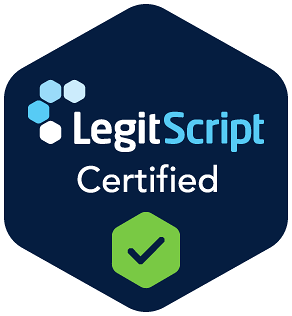Understanding Medication Adherence
Medication adherence plays a significant role in the management of overall health, especially for individuals undergoing treatment for drug and alcohol addiction. It is crucial for ensuring the effectiveness of treatment programs like those offered by Totality Treatment.
Impact of Poor Adherence
Poor medication adherence can have serious consequences. According to the World Health Organization (WHO), adherence among patients with chronic diseases averages only 50% in developed countries. This lack of adherence leads to negative health outcomes and an increase in healthcare costs.
The consequences of nonadherence are significant. More than 30% of medicine-related hospital admissions are attributed to medication nonadherence. Not adhering to prescribed medication can result in misjudging treatment effectiveness, unnecessary healthcare expenses, and even additional health complications. In our pursuit of effective treatment solutions, recognizing these impacts emphasizes the importance of medication management, particularly in the context of outpatient addiction treatment.
| Consequence | Impact |
|---|---|
| Increased Hospital Admissions | 30% of admissions are due to nonadherence |
| Health Outcomes | Decreased treatment effectiveness |
| Financial Costs | Increased unnecessary healthcare expenses |
Factors Influencing Nonadherence
Several factors contribute to patient nonadherence, which can occur either during the initiation of pharmacotherapy (primary nonadherence) or while implementing the prescribed regimen (secondary nonadherence). These adherence issues significantly impact both clinical results and the financial status of health systems.
Multiple influences affect medication adherence, including:
- Psychological Factors: Mental health conditions, such as anxiety and depression, can complicate adherence.
- Social Determinants: Lack of social support and unstable living conditions often lead to nonadherence.
- Educational Barriers: Insufficient understanding of medications can prevent proper adherence.
- Cost and Access: Financial constraints and difficulties obtaining medications can further impede adherence.
Addressing these factors is key to improving adherence, particularly in our structured outpatient program or when considering aftercare planning post-treatment. Understanding these elements can guide us toward more effective treatment plans for those in recovery from addiction.
Measures of Medication Adherence
Understanding how well someone adheres to their medication regimen is crucial for the success of treatment, particularly in outpatient settings. There are two main classification methods used: direct measures and indirect measures. Each has its strengths and weaknesses, and we must consider how they can best serve our patients.
Direct vs. Indirect Measures
Direct measures of medication adherence involve assessing the actual concentration of drugs or their metabolites in body fluids. This can include direct observation of a patient taking their medication or checking for biological markers associated with the drug (NCBI). Although these methods are highly accurate, they tend to be costly and susceptible to patient deception, which can affect results.
Advantages and Disadvantages of Direct Measures
| Measure Type | Advantages | Disadvantages |
|---|---|---|
| Drug Concentration | Highly accurate | High cost, potential deception |
| Direct Observation | Real-time compliance | Labor-intensive, individual variability |
| Biological Markers | Objective data | Limited availability, may not cover all medications |
Indirect measures are often more practical for our outpatient settings. They involve gathering data from patients’ accounts of their medication-taking behavior or through prescription refill records and self-reporting. However, these measures can be influenced by various factors, including patients’ recall bias and social desirability.
Examples of Indirect Measures
- Surveys and questionnaires
- Medication refill history
- Pharmacy records
Mobile apps have emerged as promising tools that leverage technology to monitor medication adherence, particularly in outpatient settings. By utilizing smartphone cameras to scan medication barcodes, these apps provide a means of tracking intake efficiently—an option that may not be as feasible in inpatient scenarios (British Journal of Clinical Pharmacology).
Balancing Reliability and Practicality
When determining the best measures for medication compliance, it is essential to balance reliability, practicality, and cost-effectiveness. There is no one-size-fits-all measure for adherence; often, a combination of methods is the most effective approach (NCBI).
Common Factors Influencing Medication Adherence
- Workload and staffing levels in pharmacies
- Similar drug names leading to confusion
- Interruptions during the medication dispensing process
- Patient counseling time constraints
- Legibility of prescriptions
Pharmacy errors can stem from either judgmental or mechanical missteps, which can further complicate adherence. To mitigate these errors, a systematic approach incorporating both indirect and direct measures should be implemented. This ensures that we gather comprehensive insights into our patient’s medication management while facilitating safe and effective outpatient treatment. For more information, visit our page on outpatient addiction treatment.
Importance of Medication Reconciliation
In our pursuit of optimal medication management, we recognize that proper medication reconciliation plays a vital role in enhancing patient safety and ensuring effective treatment. It helps prevent errors that can occur during transitions of care, such as admissions to hospitals or transfers between facilities.
Errors in Medication Reconciliation
Medication errors are a significant concern in healthcare. More than 40 percent of medication errors are attributed to inadequate reconciliation during handoffs in patient care settings. These errors can occur during admission, transfer, and discharge processes, and about 20 percent of such errors may result in harm to patients.
A study highlighted that 20 percent of medication changes during transfers between nursing homes and hospitals resulted in adverse drug events. This statistic underscores the importance of accurate medication reconciliation to prevent such serious outcomes. The risks are especially pronounced during changes in a patient’s treatment environment, making systematic reconciliation essential.
| Error Type | Percentage of Errors |
|---|---|
| Inadequate Reconciliation | 40% |
| Resulting in Patient Harm | 20% |
| Adverse Drug Events | 20% |
Inaccurate medication lists can lead to omitted medications, duplications, incorrect doses, and adverse interactions among drugs. This illustrates the need for a concerted effort to ensure every detail in a patient’s medication regimen is accounted for.
Benefits of Systematic Reconciliation
Implementing a systematic approach to medication reconciliation yields notable improvements in the management and safety of patient care. Evidence shows that standardized reconciliation processes significantly reduce the time that healthcare professionals spend reconciling medications. For example, nursing time at transfer from the coronary care unit decreased by 20 minutes per patient, and pharmacy time at hospital discharge reduced by over 40 minutes.
The involvement of an interprofessional team consisting of clinicians, nurses, and pharmacists in the reconciliation process can enhance overall clinical outcomes. When clear prescription orders and standardized verbal communications are utilized, the risk of errors diminishes. Effective communication ensures that all relevant information is accessible to the care team, reinforcing patient safety (NCBI Bookshelf).
Moreover, the Joint Commission recognized the necessity of medication reconciliation as part of the National Patient Safety Goals. By emphasizing systematic reconciliation across the care continuum, we can mitigate the risks associated with omitted medications or those that are incorrectly prescribed.
Through our commitment to meticulous medication reconciliation, we can better manage medications in outpatient settings and contribute to improved health outcomes for everyone. For more information on effective outpatient addiction treatment programs, visit our page on outpatient addiction treatment.
Enhancing Medication Safety in Care Continuum
National Patient Safety Goals
We recognize the importance of medication safety as a crucial component in the continuum of care. The Joint Commission established medication reconciliation as a National Patient Safety Goal in 2005. This initiative aims to minimize errors such as omissions, duplications, incorrect doses, improper timing, and adverse drug interactions, all of which can seriously impact patient health.
Medication errors arising from inadequate reconciliation during patient admissions, transfers, and discharges are a significant concern, with more than 40 percent attributed to these transitions (NCBI Bookshelf). Such errors can lead to harmful effects on patients’ well-being, which emphasizes the need for effective medication management during outpatient care.
Standardized Reconciliation Processes
Implementing a systematic approach to medication reconciliation has proven to be beneficial. Studies indicate that efficient reconciliation processes can lead to significant time savings for healthcare providers. For instance, nursing time at transfer from the coronary care unit decreased by 20 minutes per patient, while pharmacy time at hospital discharge reduced by over 40 minutes.
Accurate medication reconciliation is particularly crucial when transferring patients from one care setting to another, such as from a nursing home to a hospital. A study found that 20 percent of medication changes during such transitions resulted in adverse drug events, highlighting the vital importance of thorough reconciliation across all care settings (NCBI Bookshelf).
By adopting a standardized reconciliation process, we can enhance medication safety and ensure that patients receive the appropriate treatments they need. For those looking for effective treatment options, consider exploring outpatient addiction treatment as a vital step in the recovery process.
Technology in Medication Management
Advancements in technology are transforming the ways we manage medication, particularly in outpatient settings. This section explores two key technological innovations: mobile apps designed for medication adherence and near-field communication (NFC) technology for self-monitoring.
Mobile Apps and Medication Adherence
Mobile applications have become essential tools for improving medication adherence. These apps utilize smartphone capabilities, such as cameras, to scan medication barcodes, allowing patients to track their medication intake efficiently (British Journal of Clinical Pharmacology).
The features of these apps often include:
- Medication Reminders: Push notifications remind users when it’s time to take their medication.
- Tracking Intake: Users can log their medication intake, helping to monitor adherence over time.
Research indicates that using mobile apps can enhance patients’ engagement in their medication routines. For those undergoing outpatient addiction treatment, these tools can be pivotal in maintaining adherence to prescribed therapies.
NFC Technology and Self-Monitoring
Near-field communication (NFC) technology offers another layer of support for medication management. This technology is integrated into newer smartphones and medical devices, streamlining self-monitoring processes. NFC tags can record medication intake when patients touch their smartphones with the tags.
Potential applications of NFC technology in medication management include:
- Smart Pill Bottles: These can log and monitor when the bottle is opened, offering insights into patient compliance.
- Integration with Telehealth: NFC devices can transmit data directly to healthcare providers, facilitating real-time monitoring.
Innovative technologies like smart blisters, which record the time and date of medication intake, and eDispensers that dispense medication directly to patients, further enhance patient monitoring capabilities.
By utilizing these technological advancements, we can better support medication management in outpatient settings, particularly for individuals receiving treatment for substance use disorders. Ensuring adherence through these innovative methods can significantly impact recovery journeys and long-term health outcomes. For more information on other outpatient options, consider exploring our sections on intensive outpatient program and partial hospitalization program.
Improving Medication Management Outcomes
Effective medication management is vital for ensuring positive health outcomes, especially for individuals navigating drug and alcohol treatment. By adopting a collaborative approach in medication safety and utilizing the right tools for self-management, we can significantly enhance the overall treatment experience.
Collaborative Approach in Medication Safety
A collaborative approach to medication management involves patients, healthcare providers, and community members working together. This strategy leads to improved medication safety through accurate medication lists and better communication between patients and providers.
An interprofessional team consisting of clinicians, nurses, and pharmacists plays a crucial role in enhancing patient safety and clinical outcomes. They contribute by performing accurate medication reconciliations, issuing clear prescription orders, and ensuring standardized verbal order entries. Effective communication ensures that all relevant information is accessible to every healthcare professional involved in the care delivery process (NCBI Bookshelf).
The following table summarizes the benefits of a collaborative approach:
| Benefit | Description |
|---|---|
| Improved Communication | Enhanced dialogue between patients and providers increases understanding of medication regimens. |
| Accurate Medication Lists | Ensures every treatment provider has access to the same patient medication information. |
| Enhanced Patient Safety | Reduces the likelihood of medication errors through teamwork among health professionals. |
| Better Clinical Outcomes | Contributes to positive health results by providing coordinated care. |
Tools for Better Medication Self-Management
Managing multiple medications can be overwhelming, especially when they need to be taken at different times throughout the day. This challenge is common in medication management, particularly for individuals with drug and alcohol dependencies.
Utilizing the right tools can greatly assist in maintaining medication adherence. We recommend considering the following resources for better self-management:
-
Medication Management Apps: These mobile applications allow users to set reminders for medication times, track doses, and even notify caregivers about missed doses.
-
Pill Organizers: These simple tools provide a way to sort medications by days of the week or specific times of the day, making it easier to follow the prescribed regimen.
-
Medication Management Programs: Programs like Medication Therapy Management (MTM) services, established under the Medicare Prescription Drug, Improvement, and Modernization Act of 2003, offer counseling and education to improve medication understanding and adherence.
-
Patient Education Materials: Informative brochures and digital resources help patients understand their medications better, fostering adherence and reducing the risk of adverse drug reactions.
By embracing a collaborative approach and implementing effective self-management tools, we can transform the experiences of individuals undergoing treatment for drug and alcohol dependencies, promoting recovery and overall health. For more information on outpatient options, explore our resources on outpatient addiction treatment and related topics.















